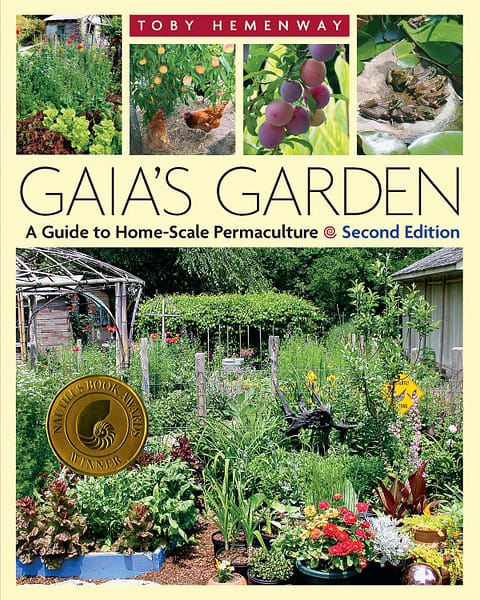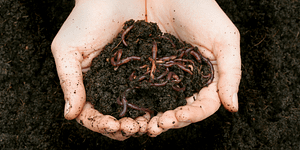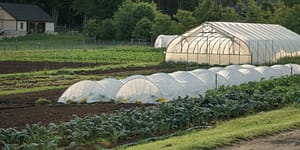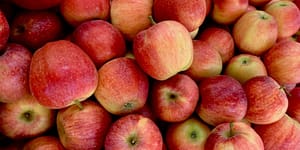The Surprising Benefits of Rewilding Your Garden

Rewilding is one of the best things you can do for the biodiversity of your farm or garden. By no longer mowing your lawn, flowers will start to grow, creating a meadow and a habitat for creatures that often get forgotten.
The following is an excerpt from The Healthy Vegetable Garden by Sally Morgan. It has been adapted for the web.
Rewilding Your Garden: A Myriad of Benefits
I have seen first-hand how the biodiversity of our farm has increased over 16 years through our organic, agroecological management. We’ve built ponds, planted willow and let our hedgerows grow large and thick.
I didn’t realise just how important small brambly/scrubby areas were to trees, until I saw how they allow tree seedlings to survive out of reach of browsing animals.
Now, we have a new generation of oak trees appearing on the farm.
Where Can Rewilding Happen?
Rewilding is possible even in the smallest of spaces. It doesn’t mean letting nature take over the whole of your garden.
If you do, you usually end up with more of the invasive weeds and, while it’s fine to have a bramble patch on a farm, you don’t want those species taking over a small garden.
But you can loosen up and create areas where wildlife can thrive, such as a tiny copse in the corner, an area of long grass, a few weedy patches, some wood piles and small ponds.
These will create a mosaic of interconnecting habitats that will attract a wide diversity of species.
The Lawn
It’s easy to relinquish some control of your lawn. Throw away the weedkiller and fertilisers, and let a few flowers grow. Or simply make a higher cut, so more ground-living animals survive the blades.
Even our formal lawns receive no ‘treatment’, other than an infrequent mow. We collect the clippings as they are full of nutrients and would encourage more dominant grasses (I use the clippings for mulch).
Over time, the fertility of the soil has decreased and now favours the less competitive native species. The lawns are now a mix of flowering plants, grasses and mosses that are tolerant of mowing.
I have counted 14 different species (other than the grasses and mosses): buttercup, cinquefoil, red and white clover, daisy, dandelion, hawkweed, ground ivy, scarlet pimpernel, plantain, selfheal, sorrel, speedwell and violets.
It is fascinating to see how the mix varies from the sunnier side to the shadier east side of the house.
Other ideas include creating patterns in the lawn by leaving strips unmown or giving over a strip at the back to create a wildflower meadow, leaving it uncut in summer.
You can plug-plant some pretty native meadow flowers to get things going. Cut your meadow once a year, after flowering, to prevent the more aggressive plants from getting established.
Hedges and Boundaries
Walk along a hedgerow in late spring and you’ll see the open flowers of cow parsley, hogweed and other umbelliferous species covered in predatory wasps and beetles, which then move into the fields to help to control crop pests.
The hedgerow provides year-round shelter for natural predators. You can create hedgerows along your boundaries and establish shrubberies elsewhere.
Wildlife Shelter
Create shelters and habitats under your trees and shrubs by piling up small logs and covering them with twigs and fallen leaves.
These are perfect for ground beetles, spiders and other invertebrates, as well as for snakes, toads and even hedgehogs. You can build bug hotels and wood mould boxes.
Even piles of old clay pipes can provide an important refuge.
Nettle Patch
Nettles (Urtica dioica) encourage insects and are the food plant for the caterpillars of the small tortoiseshell, red admiral, peacock and comma butterflies, as well as several moths.
In fact, around 50 different species of insects are associated with nettles, as the sting protects them from grazing animals.
To get the most benefits for wildlife, don’t establish your nettle patch in a shady corner as you need a sunny spot to draw in the butterflies.
Cut the nettles back in summer to encourage another flush of leaves, after checking first for caterpillars and predators.
The nettles can be harvested (wearing gloves) to make nettle tea or to eat, as the young leaves are highly nutritious.
Build a Pond
A pond or small wetland area is probably the most beneficial feature you can create for wildlife.
It can be as simple as a small container or half a barrel but, if you have the space, having a clay-lined pond with a deep area and a shallow margin is the ideal. It will attract animals such as dragonflies and damselflies, newts, frogs, toads and grass snakes, as well as provide drinking water for birds and mammals.
Use Vertical Spaces
Make sure walls, fences and arches are covered with plants.
A wall or fence covered with a grapevine, honeysuckle or some ivy not only looks wonderful, but can provide nesting sites for many of our garden birds, while flowers and berries are sources of food and attract pollinators.
Ivy flowers in autumn provide bees with a last boost before they hibernate for winter.
Plant a Tree
There is always a spot for a tree in a garden; you just need to check that it’s right for your space.
A tree creates another layer in the garden, so it will be colonised by a different group of insects and birds.
It will shade the area below, to create more varied microhabitats, and will contribute to the leaf litter in autumn. It will even have a cooling effect on a hot day.
Recommended Reads
Recent Articles
Storing seeds is the key to having a successful growing season. Follow these tips for keeping seeds organized so you’re ready to plant as soon as the time is right!
Read MoreEver wonder what worms and centipedes are doing as they crawl through your soil? They’re actually working to improve the soil’s health, which benefits the environment and all living things in the long run. The following is an excerpt from Farming on the Wild Side by Nancy J. Hayden and John P. Hayden. It has been adapted…
Read MoreWinter may be coming, but that doesn’t mean you should put away those tools just yet! Extend the growing season past the first frost with a few modifications.
Read MoreOnce considered an undesirable vegetable mainly fed to cattle, kale has evolved over the years to become a powerful superfood!
Read MoreApple cider vinegar isn’t just for the kitchen, it’s also extremely useful in creating amendments for your garden. Before you reach for that bottle in your pantry, if you have an apple tree (or a crab apple tree) use the ground apples to make your own! After your apple cider vinegar is brewed, you’re ready…
Read More













